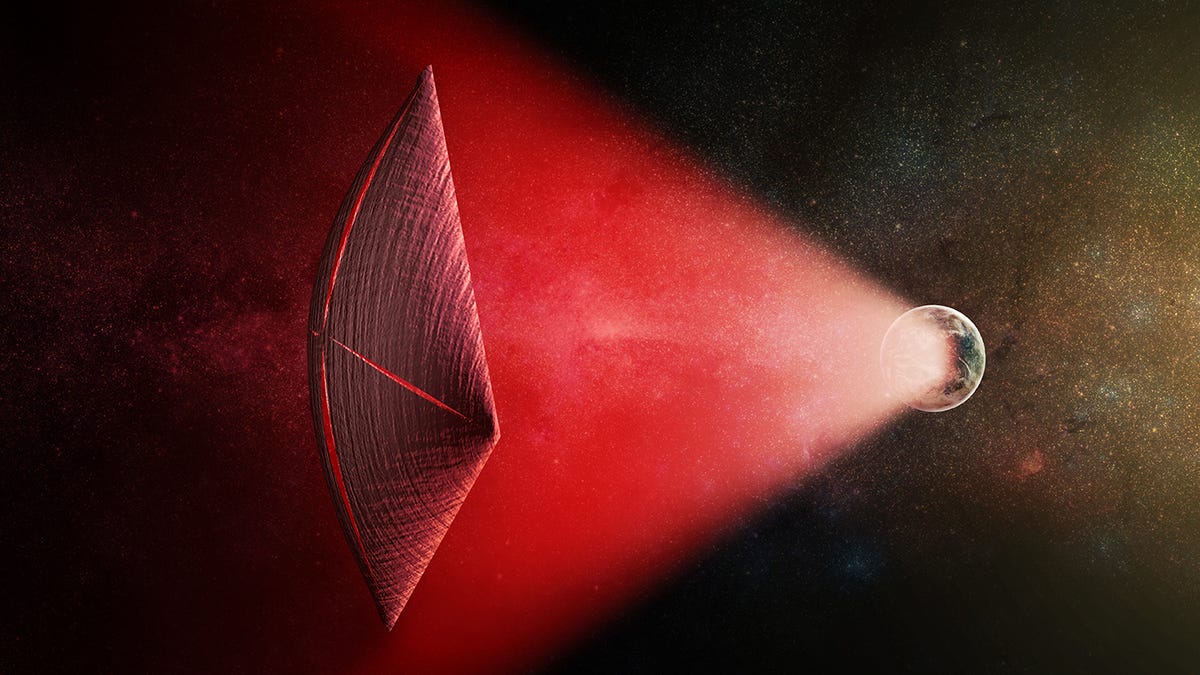What if fast radio bursts were powering alien starships?
Strange signals from billions of light-years away may have a natural cause. If they're artificial, they'd require some awesome engineering, say scientists.

One of the weirdest phenomena astronomers have run across in the past decade is something called "fast radio bursts" -- millisecond-long flashes of radio signals that don't have an obvious source.
Possible causes include exploding black holes, magnetars and hypothetical blitzars. Harvard scientists have now run the numbers on the most intriguing potential explanation: ginormous transmitters powering alien starships.
"Fast radio bursts are exceedingly bright given their short duration and origin at great distances, and we haven't identified a possible natural source with any confidence," theorist Avi Loeb said in a press release Thursday. Loeb works at the Harvard-Smithsonian Center for Astrophysics. "An artificial origin is worth contemplating and checking."
Earlier this year a different set of researchers announced they had traced the only known repeating FRB to a source somewhere in a distant dwarf galaxy some 3 billion light-years away.
Loeb and co-author Manasvi Lingam have written a paper that considers what it would take to build a transmitter powerful enough to send signals strong enough to be picked up billions of light-years away. The paper has been accepted for publication in Astrophysical Journal Letters.
The answer they come up with is pretty straightforward: It would take a lot of frickin' power. In fact, presuming such a system was relying on solar power from a nearby star, it would require covering a planet twice the size of Earth with energy collectors. They also considered if such a construction project was even viable or if it would just surely overheat. They concluded that a water-cooled energy generation or collection source twice the size of Earth was theoretically possible.
But this all leads to one obvious question: Why the heck would anyone build something so insane just to send signals into the great universal void?
The theorists considered that the purpose might not be to communicate, but to drive interstellar light sails. This is a concept that humans are working on now. Backed by Stephen Hawking and Mark Zuckerberg, Breakthrough Starshot would use the technology to send tiny nanoships on a journey to check out our nearest neighboring star system, Alpha Centauri, which could be home to an Earth-like planet called Proxima b.
Light sails work by constantly focusing an energetic beam on the sail of a ship to push it across the cosmos at high speed. If a super Earth-size transmitter were being used for this purpose, the researchers calculate it could power a starship almost like what we're used to seeing in science fiction, up to 20 times the size of the largest cruise ships on Earth.
Loeb and Lingam concede that their research is speculative and a bit far-out, but they say it's worth checking into all possibilities.
If the notion of a transmitter twice the size of our own planet isn't mind-blowing enough, consider one other fact that physics won't let us get around. If this does turn out to be the actual cause of FRBs, the civilization that built such a system would have been putting it to use billions of years ago.
We might just now be detecting evidence of a real-life "Star Trek" society. The reason they haven't hailed us directly is that they would've been lucky to even find bacteria on Earth at the time they were powering up the starships.
Space is not only really big, it's also really old.
Solving for XX: The industry seeks to overcome outdated ideas about "women in tech."
Crowd Control: A crowdsourced science fiction novel written by CNET readers.

